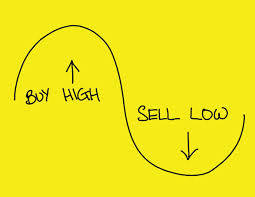
The US reporting season, which is currently in full swing, has dramatically illustrated the difference in the performance of traditional blue chip Australian companies relative to those that are disrupting them.
Examples: After Amazon and Google reported , their shares promptly jumped by 10% or US$60 – Amazon is now over US$600, while Google is now above US$700 (after a one for one bonus). Meanwhile, ANZ bank reported and dropped 4%, and so did NAB. Woolworths didn’t report, but issued a 35% profit warning anyway. Let’s not even talk about Rio and BHP.
Offshore disruptors are winning, hands down.
Here’s the problem for Australian investors. It would be tempting to think that because the big disruptors are based in the US or China that they won’t have an impact on the Australian market. This is a justification used by those that are trying to sell Australian funds and shares to unsuspecting investors.
And it’s plain wrong. Apple has already disrupted Telstra by offering a mobile phone product against the landline and it will keep doing so (free offshore calls on Facetime or Skype, anyone?). New banking products are coming (Paypal, Square, ApplePay, released in Australia last week, Society One) and they don’t have the Australian banks in their business plans, except as a target.
Netflix has disrupted Foxtel by offering the best content at a fraction of the price. It is only a matter of time before Amazon goes ahead with its distribution centre in Australia, and then we can watch Woolworths and Coles try to explain how it won’t make a difference to them. Just like Fred Hilmer did when Seek attacked Fairfax.
Meanwhile, what has shopping centre investor Frank Lowy been doing? Reducing his exposure to retail property. This has been going on for years.
The fact is that blue-chip companies are being absolutely eviscerated on the Australian stock market. The ASX S&P 200 is up a scant 0.8% over a one year period and it’s fallen 15% plus in the past 6 months. The AFR recently ran a piece referring to the lost decade for Australian share investors – in ten years, the market rose a grand total of 15%.
Keep in mind that this is in an Australian dollar that has fallen in value by 20% this year alone. Against this, the disruptor-focused NASDAQ is up 11% (so up over 30% in Australian dollars in a year). Most investors in anything like a traditional Aussie fund won’t have returned this. Check your correspondence if you don’t believe me.
(Except, of course, for a few genuinely talented stock-pickers, who are more or less out of the Australian banks and resources, for sensible reasons).
There was commentary in this space by Satyajit Das who wryly pointed out that disruption wasn’t a good thing necessarily. He is absolutely right. But his commentary begs the question: what should investors do about it? We know that Amazon has harvested billions of dollars of value from by outcompeting Walmart – yet there are significant numbers of investors still in Walmart. We know Apple has harvested value from businesses in industries as diverse as film (meaning the physical and chemical process) and book publishers. Yet most Australian funds still hold Telstra, which up to a couple of years ago was still printing the telephone directory.
On Monday, there will be the usual swathe of commentary about how the Australian banks are fair value. I would caution potential buyers to review this same commentary of one year ago, for a healthy dose of reality.
The world is changing. Investors need to get with the program or face the fiscal consequences.
What will disrupt the disruptors?
27 Jun 2025E&P’s Words on Wealth Podcast interviews Alex Pollak and Raymond Tong on ‘AI’s Expanding Reach’
26 Jun 2025‘Beating the market in a time of hyper-disruption’: Alex Pollak features on EquityMates Basis Points
25 Jun 2025Cage fight: Trump v Musk! Alex Pollak features in SBS On the Money
15 Jun 2025
Share this Post

